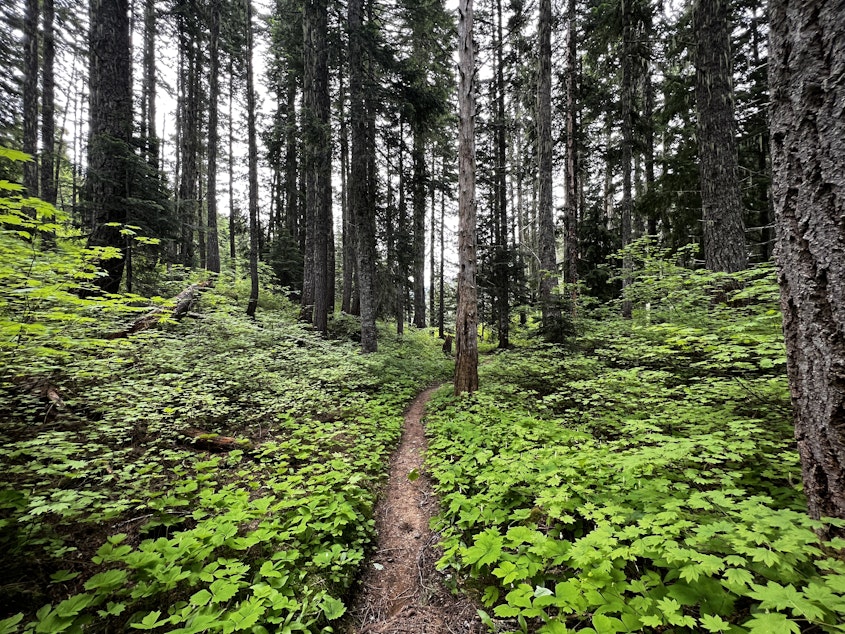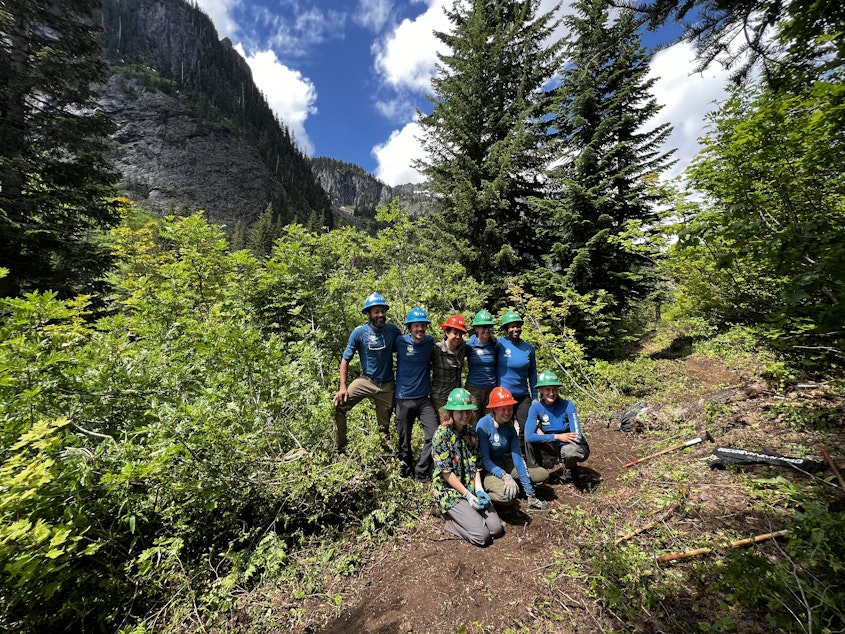It's peak hiking season in the PNW. But who takes care of all our trails?

Washington state has more than 700 miles of hiking trails in it state parks alone, alongside hundreds more in its national parks and national forests.
With so much room to roam, keeping up with trail maintenance is a daunting task, and organizations like the forest service are constantly fighting a backlog of trail maintenance.
What goes into trail design and upkeep? And what happens when trails are left unattended?
The chain of custody for Washington's trails is complicated.
They cut through urban forests and snake into wilderness throughout the Cascades. Public land managers for our national forests, like the Okanagan-Wenatchee and Mt. Baker-Snoqualmie, can oversee hundreds of trails alone. With so much ground to cover, it's not surprising that land managers struggle to keep up with demand, wear and tear, and disuse of hiking trails.
"I would say maybe 20 to 25 percent of our trails maybe don't get logged out in a year," said Jonathan Meier, the recreation program manager for the Entiat Ranger District in the Okanogan-Wenatchee National Forest. "Logging out" refers to the removal of downed logs blocking trail access.
"We obviously hit the higher-use trails first," Meier said. "Then we might try to rotate the trails. Every three years we might get to those lower-use trails and get those logged out."
Trail maintenance on the east side of the Cascades has become increasingly difficult as wildfires spread. Meier said that since 2015's wildfires, the ranger district is still finding 100 downed trees per half mile.
Sponsored
"In the first couple years when we were trying to catch up on trail maintenance, clearing it, and we were falling behind," Meier said. "We would get a lot of phone calls from folks asking when we were going to clear certain trails."
The backlog of facility and trail maintenance is a growing national problem, so much so that in late 2020 Congress passed the Great American Outdoors Act (GAOA). The bill provides $6.5 billion over five years to help update and expand aging facilities and trails throughout the 419 national park units, which includes national parks, monuments, and forests here in Washington.
One of the first major projects to sprout from the GAOA is the Washington Trail Association's "lost trails found" crew. The WTA coordinates trail maintenance with thousands of volunteers each year seeking to shore up and improve conditions on trails. But the lost trails found crew has a different mission — rediscovering trails that have been inaccessible for years.

"Our big goal is like we want to build trails for everyone, forever," said Austin Easter, the statewide trails program manager for WTA. "We want to be able to provide access to all of these remote trails that haven't been able to be visited in the past six years because of the log conditions, or it's really brushy, or it's really tough to get out there."
Sponsored
The WTA currently has two fully employed lost trails found crews, one focusing on the Mt. Baker-Snoqualmie National Forest and the other focusing on the Okanogan-Wenatchee National Forest. Crews spend eight days on trail and six days off, a timeframe which allows them to backpack and camp through wilderness as they progressively clear trails. Some trails can take up to 20 days to clear just four miles of tread (the dirt pathway we commonly call the trail).
The crew most recently worked on the Mineral Creek Trail, outside Roslyn on the east side of the Cascades. The trail provides access to the Pacific Crest Trail and lessens the traffic and impact on the Pete Lake Trail, which is just over the ridge.
"If you came out here before this crew, you would find gigantic sections where you can't even see the trail floor," Easter said. "I came out here last year after a rainstorm and I was basically swimming through all this brush and I was soaked. So it's really fun to come out here and reopen it for some other users."
Soundside producer Alec Cowan met with the lost trails crew on the Mineral Creek Trail. You can hear the full audio story, including the ins and outs of trail design, what constitutes a lost trail and the future of trail restoration by clicking the audio above.





